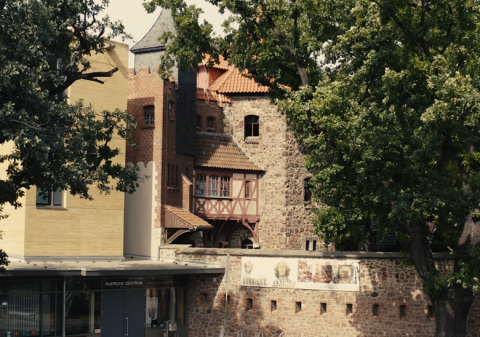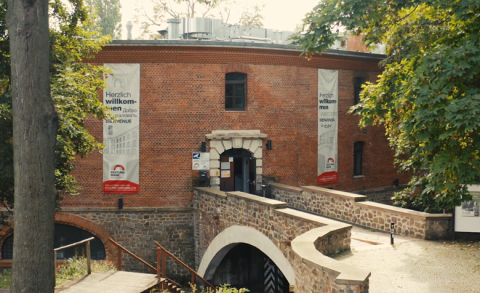Restoring fortified cultural heritage
European history has been filled with wars and territorial changes. As a result, fortifications define the landscape and borders of countless cities today. Some of them are even listed as UNESCO heritage sites. Fortified heritage from various time periods includes structures used for the defence and protection of people, their homes, cities, local infrastructure and even entire regions. This military heritage is an extraordinary testament to European history, which often fell into neglect and disuse.
Fortresses represent a significant and tangible part of a nation’s cultural heritage and a valuable development asset. In December 2018, the European Commission presented the European Framework for Action on Cultural Heritage, which references the importance of reusing military heritage spaces for sustainable urban regeneration.
According to the European network for fortified cities, forts and defence lines (EFFORTS), these historic monuments offer many opportunities to a wide range of stakeholders.
They can become hubs for ecological innovation, and cultural spaces or they can support local tourism (inspiring examples are povided by Forte Cultura is an organisation, which shows the tourism potential of fortifications). As opposed to their defence role in the past, today “they are the symbols of our common history and challenges, uniting Europe instead of dividing it.”
Get inspired by how cities are manage of this kind of heritage, with good practices of the Interreg Europe RFC project, focused on sustainable the revitalization of heritage buildings by improving the coexistence of fortified cities and neighbouring forts in urban regions.
Value of the past
The City of Magdeburg is the capital and second largest city of the German state Saxony-Anhalt. The city has around 240 000 inhabitants and has been completely destroyed twice, during the Thirty Years’ War and during the Second World War. Hence, military conflicts are an inherent part of the city’s history and identity. A large part of the valuable historical building fabric was irretrievably lost. The eventful history of the city until the late 19th century can be read along the remaining fortifications.
The city is working on reviving this cultural heritage and recognizes the opportunities that lies in the walls. “It is important to remember our history, to keep in mind how war brought suffering to Europe. If you get people engaged in the fortified heritage, you can connect them to their past, but also strengthen their European identity,” explains Josephine Kroneberg, RFC Project Coordinator for the City of Magdeburg.
Apart from their historic relevance and storytelling potential, these monuments can be used for sustainable initiatives and cultural projects, and to foster social interactions. Quite surprisingly, the fortresses significantly impact the local micro-climate, as the thick stone walls create cold air, and are often surrounded by green spaces and parks, which cool cities down during summer. “The fact that Magdeburg is one of the greenest cities in Germany today is also due to its centuries long state as fortress”, explains Kroneberg.
“The fact that Magdeburg is one of the greenest cities in Germany today is also due to its centuries long state as fortress”, explains Kroneberg.

Some of Magdeburg’s fortified heritage has been already restored. Kaserne Mark, a former Prussian barracks, has become a popular event venue, contributing to the object’s wide acceptance among citizens as an important part of the city’s history. Through a transfer agreement, Ravelin 2 has been handed over to a volunteer association in 2015 for restoration and developing fortress tourism. The association restored the monument in cooperation with the city (the owner of the site) and converted it into a first-hand history experience venue.
Josephine Kroneberg, also a board member at the association, says „we are an intergenerational group of people from many walks of life working together to restore the place and to allow people experience history in an animated way through guided tours in historic clothing and various events.” Other parts of the fortress across the city were given a new lease of life, being turned into parks, sports playgrounds, a museum or a restaurant.
Magdeburg’s future
The city has developed a Monument Preservation Plan and is currently working on a Masterplan for its fortified cultural heritage.

“We started a few years ago by forming a green fortress belt around the inner fortification and now want to include the external former belt of individual forts as well, with a path for cycling and walking, while developing a new tourism guidance system for the whole city. In the future we would like to digitalise some of our lost fortresses and repurpose monuments and areas which are still abandoned” Kroneberg shares some of the future plans.
Approval of the action plan by the city council and development of the new masterplan help create a more integrated strategy. Moreover, the city has a “Future Fortress Forum”, a local expert advisory board, which helps align the vision and future plans.
According to Kroneberg, there are also some hurdles to overcome, “[…] the monuments are owned by the city, private owners, or the federal state, which makes governance complicated. At the same time, responsibilities are scattered across different municipal departments. We are always searching for the balance between protection of natural and cultural heritage, and are continuously informing the public and raising awareness about the value of the fortresses.”
While the situation is much better compared to the past, not everyone is convinced this heritage should be preserved. “The Association Ravelin 2 has been very successful in changing the public opinion over the last eight years”, says Kroneberg, “at first, people were judgmental and felt that the fortified heritage is connected to militarism, especially the Prussian fortresses, but now the perception is changing.”
The importance of volunteers
The Association has not been taken seriously at the start, but it has since gained the trust of the public, as well as that of the municipality.
Today, it has up to one hundred members and plays a significant role in the revival of Magdeburg’s fortresses. At Ravelin 2, volunteers cleaned the fortress by removing eight layers of graffiti, created a connection to electricity and water, installed sanitary facilities, developed guided tours and exhibitions about the city and its history, created strong regional networks with various partners, reconstructed a historic bridge, and organised many events with up to 18 000 visitors. The work of the association created the attention needed to trigger an ERDF funding measure of 2.4 million Euros and supported the realization of the project as user of the site.
Kroneberg believes that the role of volunteers is essential. “Thanks to their work, local citizens, as well as the municipality, understood the potential of these fortresses. There used to be a lot of vandalism before, but Ravelin is now seen as a place of value”. The volunteers receive financial support from various partners and sources, including ERDF or federal state funds.
They collaborate with artists, cultural organisations, the gastronomy sector and adjacent stakeholders to increase impact. They are rewarded by a growing number of visitors and tourists. “The municipality raises awareness by publishing brochures, movies and media publicity and the volunteers are an important part of that. We really have a nice symbiosis between the association, volunteers and the municipality”, adds Kroneberg.
Asked about advice she would give municipalities wishing to revive their fortresses, or any other type of built heritage, Kroneberg says, “it is important to have one successful project that will create awareness and get things going.
You have to find ways to revive the monuments while maintaining their history, have a team of motivated volunteers and keep it fun in the process. Build strong supporting political networks, have a clear vision and strategy, strong visibility, a lot of patience and continuity, to make sure all the plans will get implemented.”
For more information
- Explore the city of Magdeburg
- Read more about the volunteer association Ravelin 2
- Watch a short movie “Recapturing the Fortress of Magdeburg”
- Read the Fortifications of Magdeburg brochure
- Read about the Adaptive reuse of religious heritage





